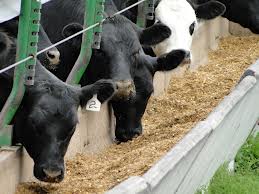Ryan et al., report in Foodborne Pathogens and Disease that Escherichia coli O157 is a foodborne pathogen that can be transmitted by contaminated ground beef and is shed naturally in cattle feces.
Recent reports indicated that feeding distillers’ grains (DG) to cattle increased fecal shedding and prevalence of E. coli O157. In Minnesota, feeding DG with solubles (DGS) to livestock became widespread within the last 10 years, but there is no report about the prevalence of E. coli O157 in beef cattle in this  state. This study was undertaken to survey the fecal prevalence of E. coli O157 in cattle fed diets containing DG and its association with environmental conditions and management practices.
state. This study was undertaken to survey the fecal prevalence of E. coli O157 in cattle fed diets containing DG and its association with environmental conditions and management practices.
Fecal samples were collected from three feedlots during a 1-year period. All animals in those feedlots were fed different DGS levels. E. coli O157 presence was determined using a combination of enrichment, immunomagnetic separation, plating onto sorbitol MacConkey agar, and confirmation of isolates by immunoassay and multiplex virulence genes polymerase chain reaction analysis. Overall, E. coli O157 was confirmed in 9.7% of samples. Prevalence during summer was 30% and declined to less than 10% the rest of the year. In animals grouped by dietary DGS concentration, no significant difference in prevalence (12.0 and 5.5%) was detected between the low and the high average groups (less and more than 20%). Previous feeding of DGS before arriving to the feedlot also had no influence on fecal prevalence.
The presence of several interacting variables, uncontrolled in a real-life feedlot environment, was the likely reason for our observation and suggested that at the levels studied, DGS had no effect on the STEC O157 prevalence in cattle populations.
